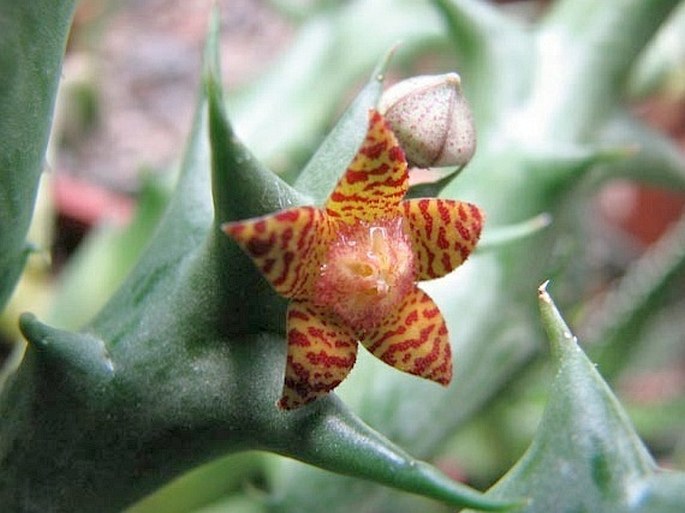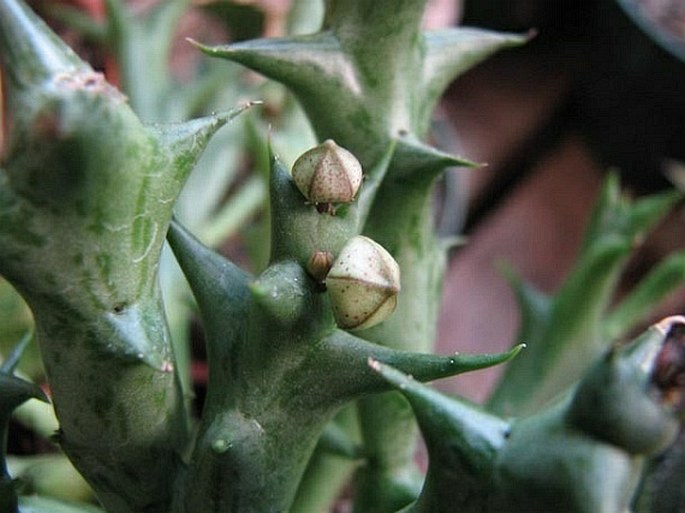Syn.: Angoluma schweinfurthii (A. Berger) Plowes, Caralluma schweinfurthii A. Berger, Pachycymbium schweinfurthii (A. Berger) M. G. Gilbert
Family: Apocynaceae Juss.

Distribution: Zaire, Tanzania, Zambia, Zimbabwe, Rwanda.
Ecology: In grasslands, under bushes, well drained substrate, very seldom in open under full sun.
Description: Perennial plant with fibrous roots; stems succulent, mostly decumbent, basally slightly tapering, in flat mats, 8–10 cm long, 4–5 ribbed, green to reddish, purple mottled; tubercles 0.8–1.5 cm, spreading, ascending; leaves rudimentary, slightly turned upwards; Inflorescence 2–5 flowered, erect, at stem tips; buds rounded, obtuse; pedicels 3–4 mm long; corolla outside green with a few red blotches, inside yellow to brown, spotted with wine-red, beige or purple, 1–1.5 cm across, flat, tube very shallow, lobes 6–12 mm long, triangular-ovate, acute, convex, apically somewhat bent outwards, inside papillate-warty; corona as a fleshy annulus, 4–5.5 mm across, creamy coloured, minutely red dotted; pollinia 0.3 mm, D-shaped. Fruit is a twin horn-shaped seed pod with seeds with pappi.
Notes: In cultivation it is very sensitive to overwatering.



These images were taken in culture.


